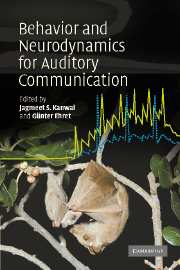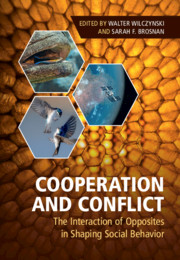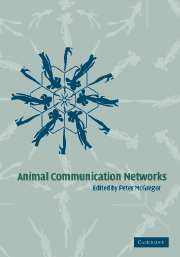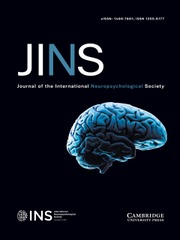Behaviour and Neurodynamics for Auditory Communication
How do animals produce and process sounds for communication? How do their brains encode the large amounts of sensory information so rapidly and how do they use this to cope with their environment? These questions not only concern the evolution of sound communication systems but also aim to understand how arousal, motivation, emotion and behavioral contexts are vocally expressed and how important sound attributes are recognized and perceived. This book highlights auditory communication in several species from four perspectives: actual sound communication, audio-vocal adaptations, adaptations of sound processing and representation in higher auditory brain centers, and emotional and cognitive adaptations in signaling and processing. Broad in scope and geared towards graduate students and researchers within the fields of auditory communication and cognition, this book will appeal to auditory neurobiologists, speech, hearing and communication scientists and engineers, students of animal behavior and neuroethologists.
- Leading researchers discuss recent advances in the neurobiology of auditory communication across taxonomic groups
- Provides a comparative overview of the rapidly advancing field of audiovocal communication
Product details
April 2006Hardback
9780521829182
384 pages
236 × 157 × 23 mm
0.737kg
82 b/w illus.
Temporarily unavailable - available from TBC
Table of Contents
- Preface
- Part I. Behavioral and Anatomical/Physiological Adaptations:
- 1. Vocal mechanisms for avian communication Roderick A. Suthers, Gabriël J. L. Beckers and Brian S. Nelson
- 2. The blind mole rat: an example of seismic communication via acoustic channels Zvi Wollberg, Rony Rado and Ronen S. Sadka
- 3. Audiovocal communication and social behavior in mustached bats Matthew J. Clement, Punita Gupta, Nicole Dietz and Jagmeet S. Kanwal
- 4. Common rules of communication sound perception Günter Ehret
- Behavioral and physiological adaptations: summary and discussion Günter Ehret and Jagmeet S. Kanwal
- Part II. Neural Adaptations and Plasticity:
- 5. Neural mechanisms of vocal communication: interfacing with neuroendocrine mechanisms Andrew Bass
- 6. Processing of species specific vocalizations in the auditory brainstem and midbrain of Mexican free tailed bats (Tadarida brasiliensis) Achim Klug, Eric E. Bauer, Joshua T. Hanson and George D. Pollak
- 7. A distributed cortical representation of social communication calls Jagmeet S. Kanwal
- 8. Spatiotemporal processing in the guinea pig auditory cortex Junsei Horikawa, Andreas Hess, Yutaka Hosokawa and Ikuo Taniguchi
- 9. Hierarchical processing of communication sounds in primates Josef Rauschecker and Biao Tian
- 10. Synaptic mechanisms and sensitive periods for song learning J. Matthew Kittelberger and Richard Mooney
- 11. Neuronal substrates of sensory processing for song perception and learning in songbirds: lessons from the mormyrid electric fish Claudio V. Mello and Patrick D. Roberts
- 12. Cortical plasticity and auditory communication Jun Yan and Jos Eggermont
- 13. Mesoscopic neurodynamics in cortex during auditory concept learning Frank W. Ohl, Henning Scheich and Walter J. Freeman
- Neural adaptations and plasticity: summary and discussion Jagmeet S. Kanwal and Günter Ehret
- Appendix: Basics of acoustic signal processing.









